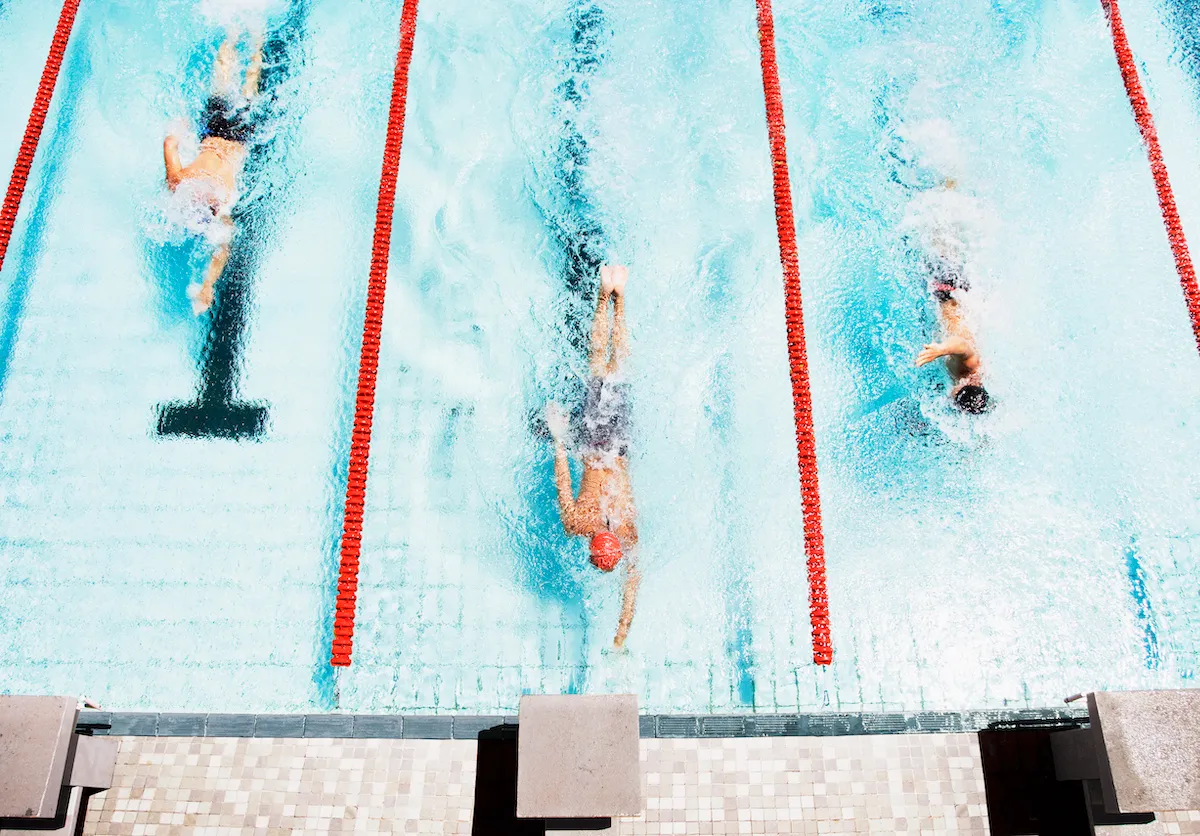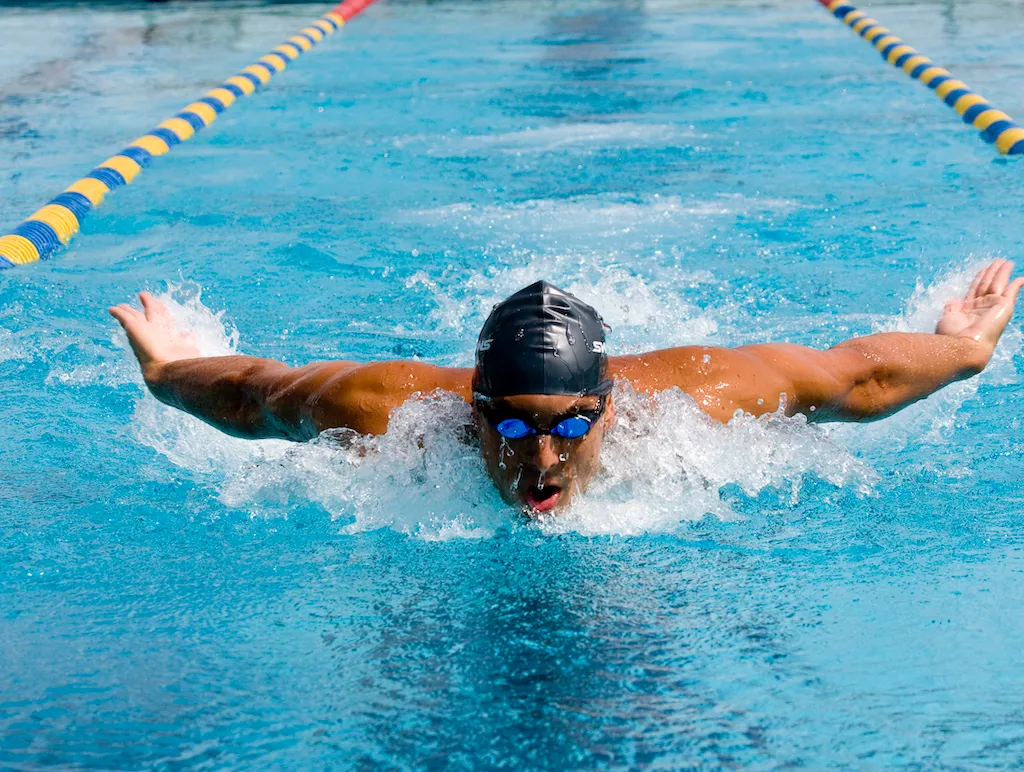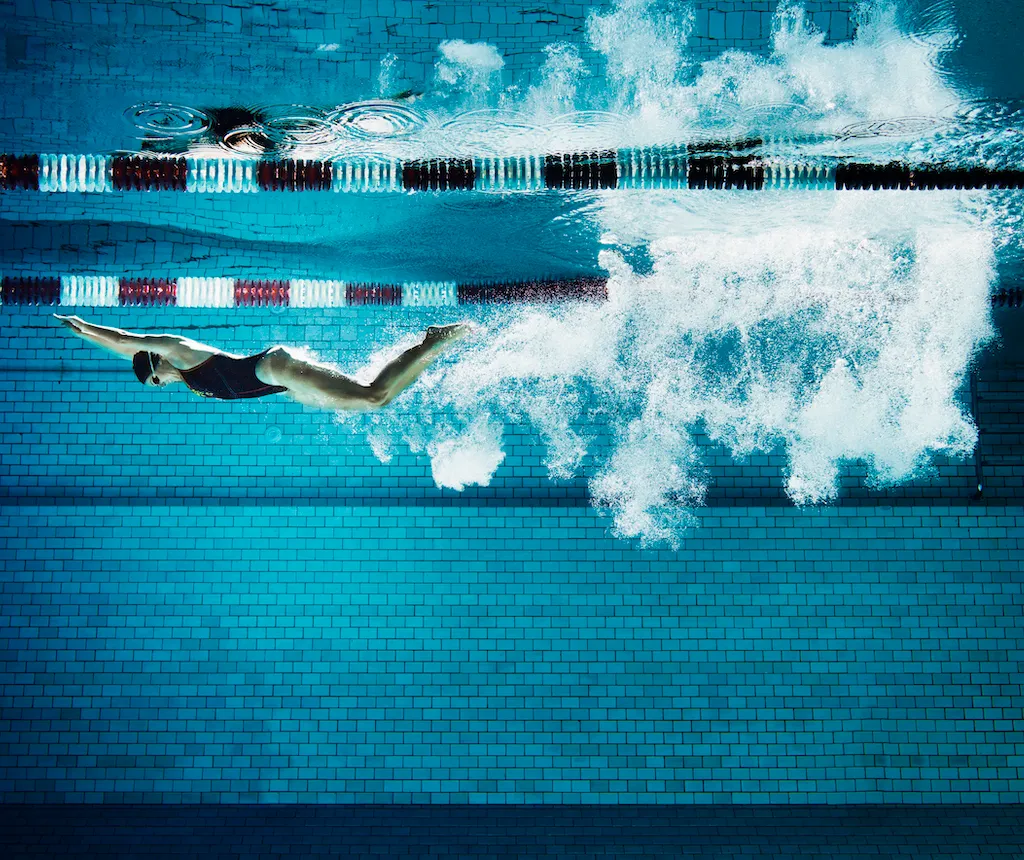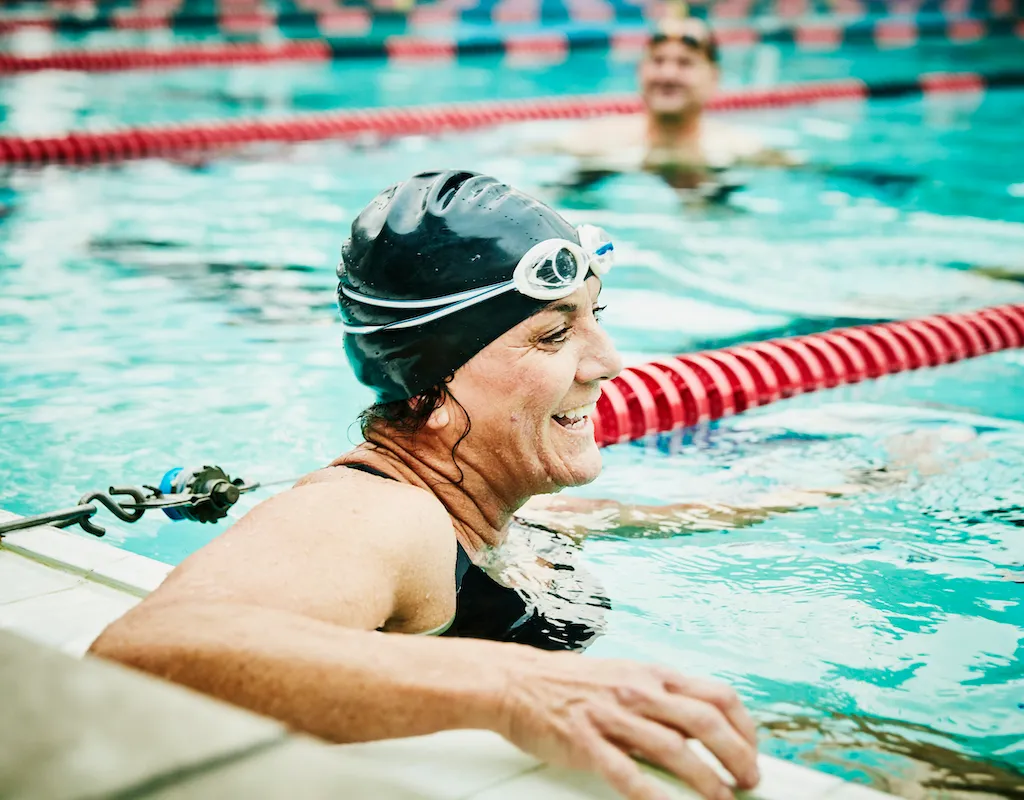While many are familiar with the benefits of running and cycling for burning plenty of calories, there’s less awareness about how many calories are burned while swimming.
While not as popular as these land-based strategies, swimming is powerful way to improve your fitness.
For those looking for an alternative way to burn a lot of calories during their fitness endeavours, let’s take a look at exactly how many calories you can burn in swimming, and how to optimise it.
How many calories does actually swimming burn?
Because of the continuous, full-body nature of the sport, swimming can burn a lot of calories.
How much exactly? Well, for a 30-minute swim, you can burn anywhere from 200-400 calories when swimming at a moderate intensity level, or from 400-800 calories when swimming with vigorous intensity.
Compare that to running, which is widely thought to burn approximately 60 calories per kilometre (or 100 calories per mile), and it's not too dissimilar for someone running a 10k in an hour.
But, while these numbers are great starting points, it’s important to remember that the number of calories you burn when swimming is going to be dependent on several different factors.
The two most important factors are your size and your effort. Even in the water, where the effects of gravity are reduced, a bigger body is going to burn more calories when exercising at the same effort level for the same amount of time. It simply takes more energy for larger humans to move through space.
If you considered yourself to be ‘average’ size, then the middle range of these numbers will likely be accurate for you.
However, if you’re a particularly small individual, you’ll likely be burning fewer calories, and if you’re a particularly large individual, you’ll likely be burning more calories.
Equally important as body size is the effort you’re exerting as you swim.
Just because you’re swimming front crawl doesn’t mean you’ll be burning the highest number of calories listed above.

If you’re swimming at a leisurely effort with little intensity, you’re likely to be burning fewer calories.
At the other extreme, if you’re swimming as hard as possible with the intent to cover as much distance as possible in a given period of time, it’s likely that you’re burning more calories.
Unfortunately, this relationship is likely asymmetrical. If you’re swimming with little effort, you’re probably burning far fewer calories than you might expect. And if you’re swimming at extremely high intensity, the caloric expenditure might not be dramatically higher.
It’s important to note that how fast you swim, in an absolute sense, does not determine how many calories you’ll burn, as speed is dependent on skill as much as it is on effort.
If you have two similarly sized swimmers working at the same effort level, but one is a much more skilled swimmer than the other, they’ll still burn a similar number of calories in a given period of time.
However, the skilled swimmer is going to cover a lot more distance as they are more skilled at using energy to create speed.
So, if you’re not a fast swimmer, that doesn’t mean you can’t or won’t burn a lot of calories.
Provided that you’re working hard, you’ll be burning plenty of calories. You just won’t be covering as much distance in that time as a faster swimmer.
Do some strokes burn more calories than others?

You may be wondering if there are differences in the number of calories that are burned between swimming strokes.
While there may be a slight difference between the strokes, with the exception of butterfly swimming, these differences are likely inconsequential.
It may make a 15-30 calorie per hour difference, but this is much less than differences in caloric burn due to changes in effort.
As mentioned, the one exception is butterfly swimming, which requires more effort to lift the body out of the water with each stroke.
However, while butterfly may burn more calories in a given time period, the challenging nature of the stroke makes it very difficult to swim long enough to take advantage of this potential benefit.
One reason that swimming can burn a lot of calories is that it involves most of the muscles of the body.
However, that all changes once you decide to use a pull buoy to focus on the arms or a kickboard to focus on the legs.
By doing so, you’ll dramatically reduce the number of calories you burn. While that perfectly acceptable when the goal is to improve your swimming skill in some way, be aware of the impact on caloric expenditure.
When choosing what stroke to swim when your goal is expending a lot of calories, the decision shouldn’t only be based on what burns the most calories.

It’s also important that you have the necessary skills to perform the stroke safely. If a stroke causes you pain for some reason, it’s not worth it!
Even more important is that you’re able to swim that stroke long enough to burn a sufficient number of calories.
Performing a short, maximal sprint burns the most calories in a given time period, but this is negated by the extended rest periods necessary to perform multiple sprints. It’s about effort and duration.
As an example, butterfly swimming is typically listed as a stroke that burns more calories per hour.
However, that’s largely because it’s impossible to swim butterfly slowly. It burns a lot of calories because it’s always performed at high intensity, even for elite athletes.
That also means that it’s nearly impossible to swim butterfly for an extended period of time.
This is made even worse if you’re not skilled at the stroke, making it more difficult to sustain the necessary intensity.
Likewise, if breaststroke bothers your shoulder or your knee, it makes sense to choose another stroke. And if your skills in backstroke prevent you from working hard, another option will be more effective.
Choose a stroke that allows you to safely work hard for sustained periods of time.
What type of sessions burn the most calories?

To burn lots of calories, you’ll need to sustain a relatively high effort level for a relatively prolonged period of time.
Within those basic parameters, there are plenty of different options. As a key aspect of burning calories is maintaining a consistent level of effort throughout, it’s important to ensure you’re using the right intensity to burn lots of calories and be able to sustain that effort.
This article shows you how to approach your workouts so that you’re always finished strong, thus maintaining a high caloric burn.
And if you’re looking to increase the challenge of your workout, here are several ways to do so. Each of the strategies outlined will lead to burning more calories.
While you want to do some sustained swimming, as that’s what’s required to burn a lot of calories, that doesn’t mean that you have to swim continuously.
As we’ve outlined previously, you can actually build endurance using short repetitions as well, and that approach will burn plenty of calories.
Ultimately, intensity is a key aspect of burning calories, and as a long-term investment in your training, it can be worthwhile learning how to create intensity by practicing swimming fast.
Finally, if you want some ideas for how to put these strategies together and construct a workout for yourself, here’s our guide to creating a great swim workout.
What are some other benefits of swimming?

While swimming can burn many calories, there are other potential benefits.
First is accessibility. Swimming is a relatively low-impact activity that many individuals can perform with reasonably high intensity. Because the impact of gravity is greatly reduced, it can reduce the stress on the lower body for those with joint issues.
Second, it’s one of the most effective ways to condition the muscles of the upper body, which can be challenging to do during many activities.
Lastly, by spending time in water and reducing the impact of gravity, many individuals find swimming to be a very restorative activity where they can freely move through large ranges of motion. Swimming just feels good!
Want to learn more? Here's a deeper look at the benefits of swimming and here's our answer to another popular question: what's a good swimming pace?
